All products featured are independently chosen by us. However, SoundGuys may receive a commission on orders placed through its retail links. See our ethics statement.
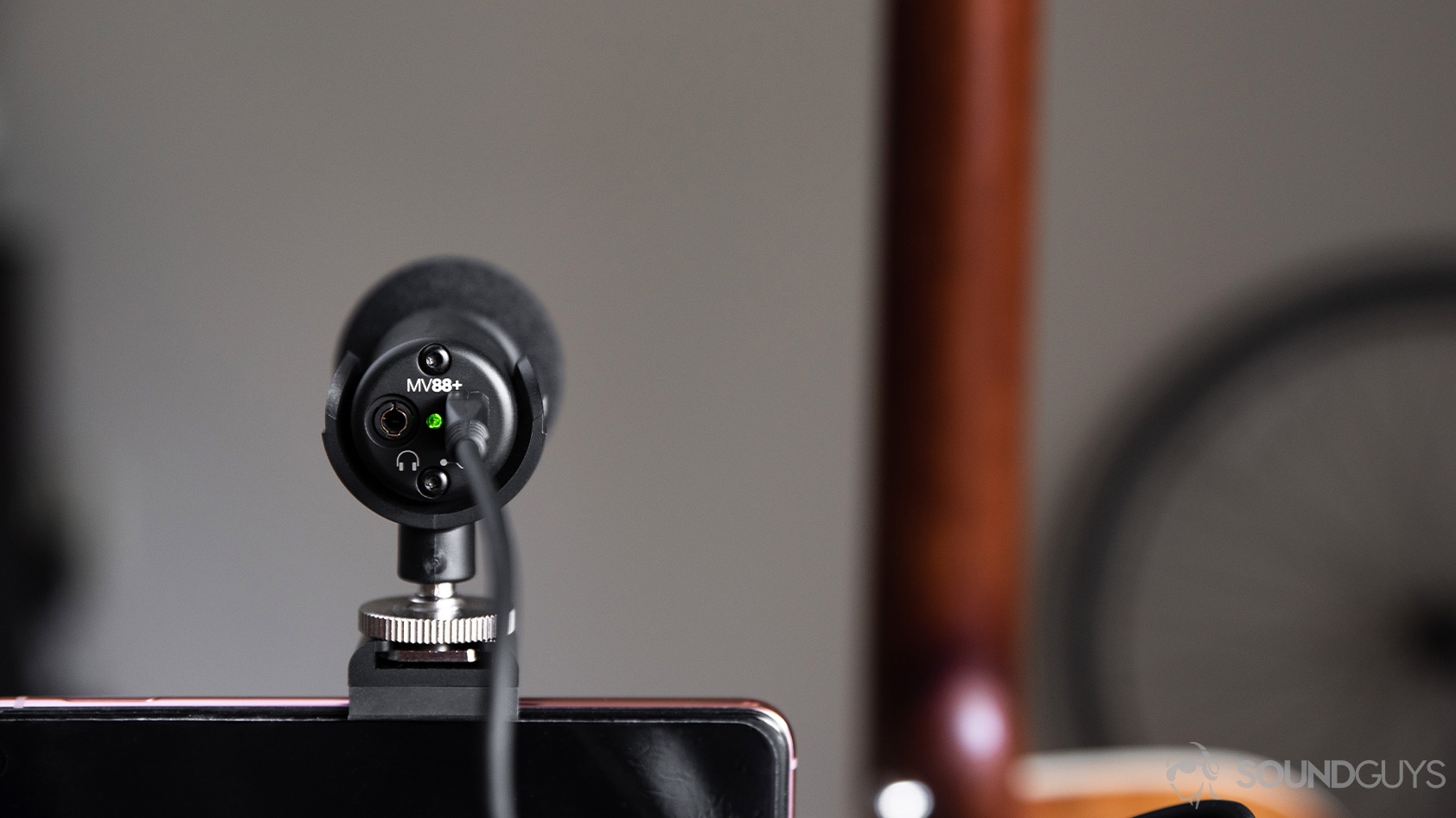
Shure MV88+ Video Kit review
December 2, 2021
Shure MV88+ Video Kit
Content creators, vloggers in particular, need a lightweight, versatile setup to accompany them everywhere. After all, you never know when the next video-worthy moment will hit. The Shure MV88+ Video Kit is made with everyday creators in mind. It’s a one-stop-shop for your transportable recording needs and doesn’t sacrifice quality for portability.
Editor’s note: this Shure MV88+ Video Kit review was updated on December 2, 2021, to include a list of alternatives, expand the list of buying options, feature a reader poll, and add a contents menu.
Who is the Shure MV88+ Video Kit for?
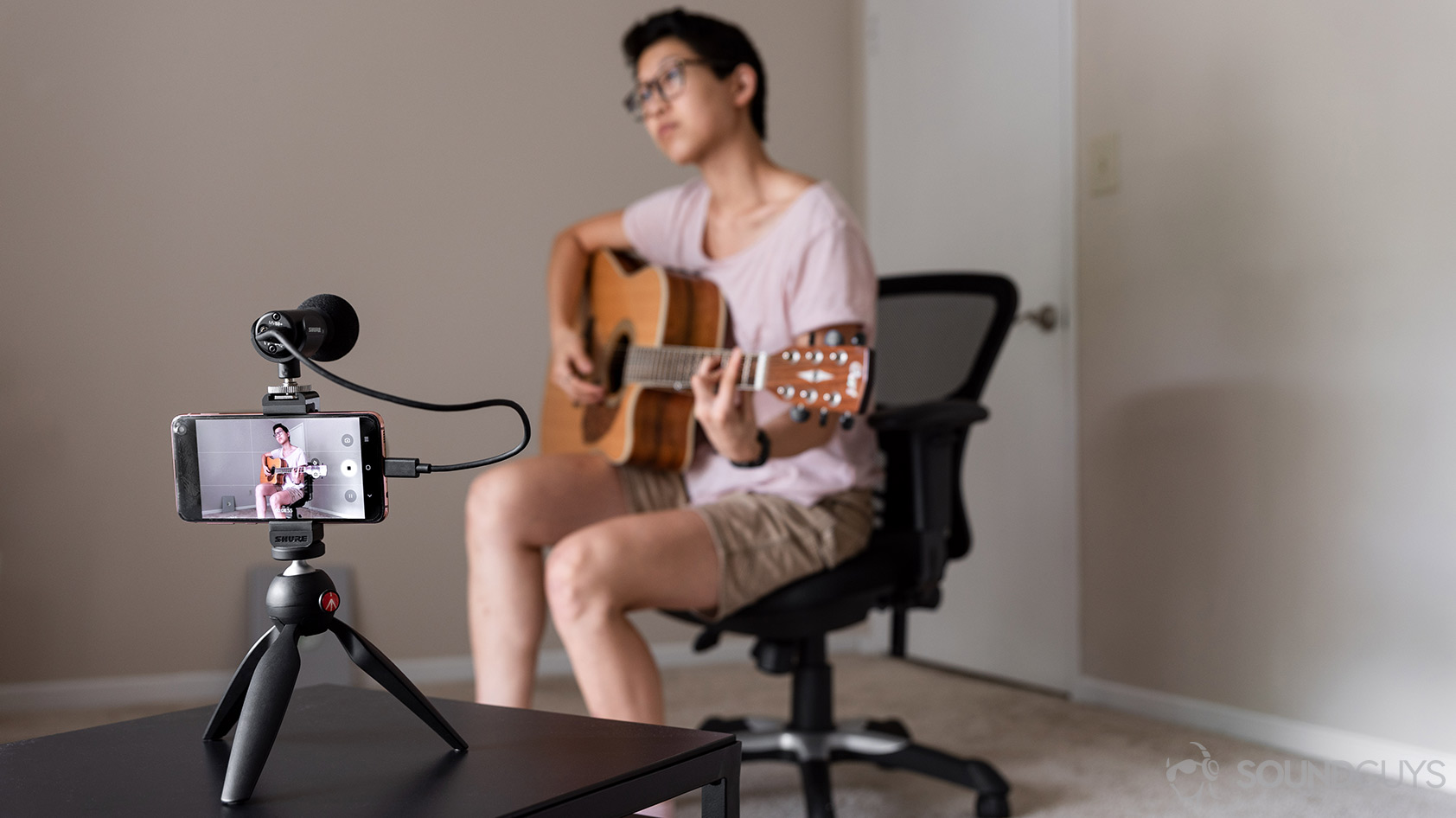
- Vloggers will benefit from the portable design. The included Manfrotto tripod, while plastic, seems durable and takes up little room in a bag. Plus, the phone mount supports vertical and horizontal recording, making it a versatile setup.
- Interviewers who want high-resolution audio should consider this, especially if you want the option to record video to accompany the audio. The MV88+ mic works with both Android phones and iPhones.
- YouTubers will see this as a great way to initially upgrade audio equipment. While phone cameras have improved leaps and bounds over the past few years, that same level of improvement hasn’t been made in smartphone recording. Investing in a better audio setup is an easy way to increase production value.
What’s it like to use the Shure MV88+?

It’s a brilliant little plug-and-go mic that can record high-res stereo audio from 16bit/48kHz to 24bit/48kHz. Being able to then directly edit said recordings from your phone further streamlines the production process.
The cylindrical capsule has two inputs: microUSB and a 3.5mm headphone jack. This allows you to adjust the gain as needed, saving you from dawdling with settings in post-production. Between the inputs is an LED indicator. When it’s green, you’re good to go. If it’s a static amber, there’s an error, while a flashing amber is indicative of the firmware updating. If it’s red, the mic is muted, and a flashing red means audio is clipping.
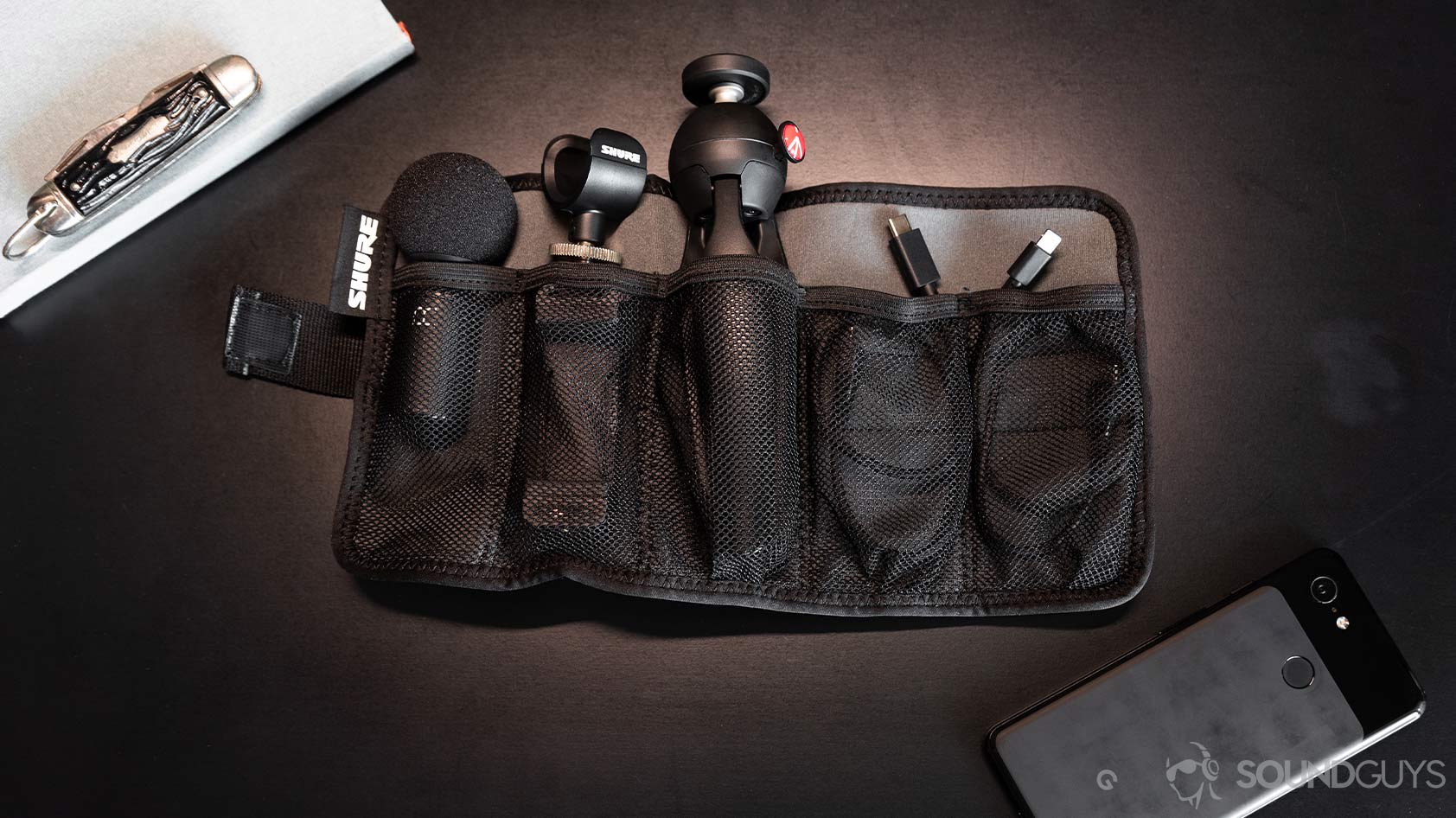
Arranging the hardware itself is easy: screw the phone mount onto the tripod, adjust the mount’s width to accommodate your phone, and plug the appropriate cable (Lightning or USB-C) into your phone. Build quality is great. The all-metal, sturdy exterior protects the condenser microphone. What’s more, the windscreen is attached to a rubberized collar, which requires force to slide on and off of the mic.
It’s a brilliant little plug-and-go mic which can record high-res stereo audio from 16bit/48kHz to 24bit/48kHz.
The included Manfrotto Pixi Mini tripod is lightweight. It’s easy to swing the legs out, yet surprisingly difficult to adjust the ball head. Hopefully, the button loosens over time though. The basic phone mount uses a screw mechanism to tighten and loosen it. It can be attached to a full-size tripod with a ¼” connector. You can forgo the use of the phone mount, and directly attach the mic mount to the tripod instead. I found this useful for recording the audio samples further down.
How do you connect the Shure MV88+ Video Kit to your phone?
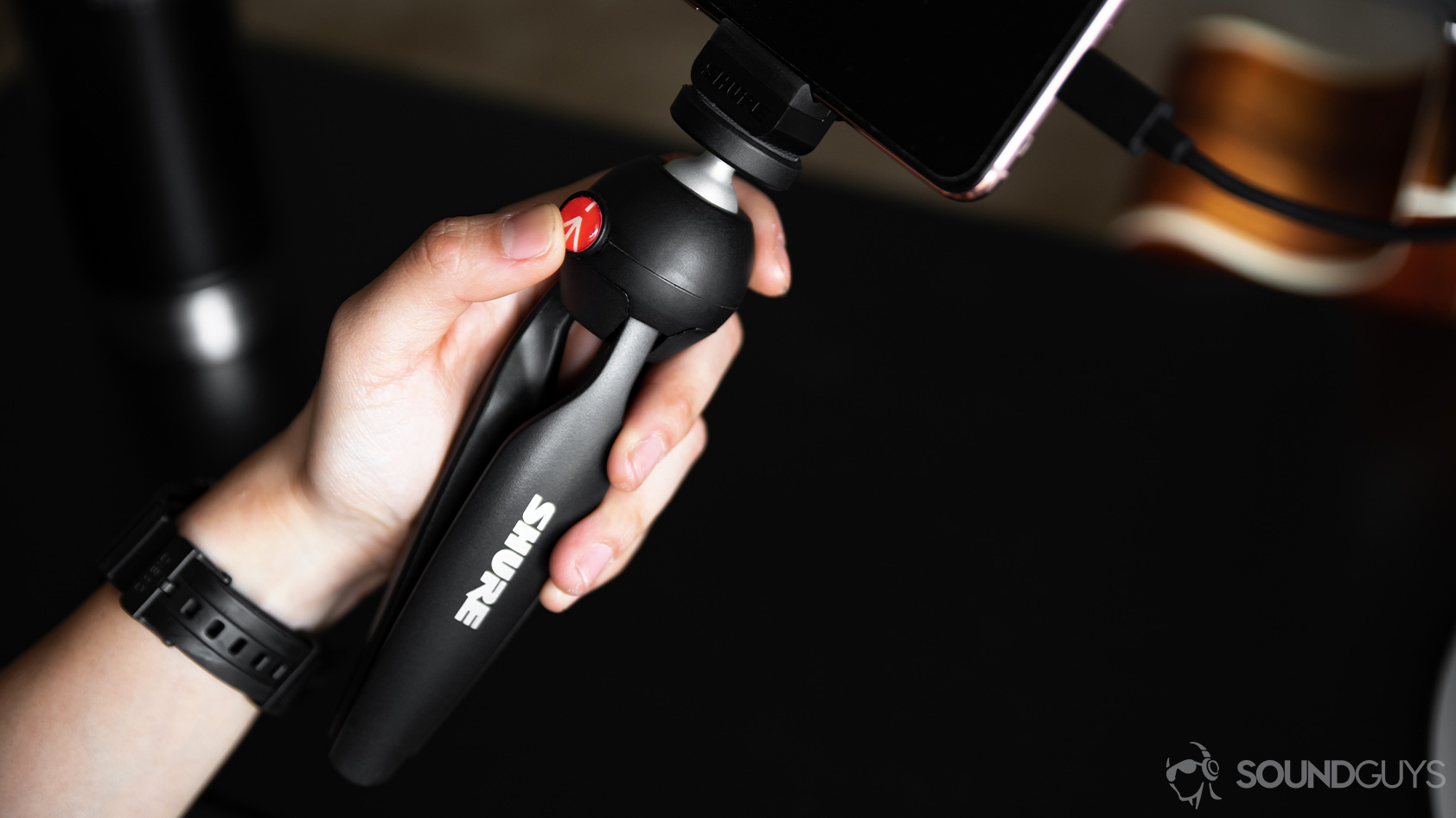
Connecting to your phone is simple. All you have to do is choose the Lightning or USB-C cable depending on what kind of smartphone you have. To get the most out of the microphone, download either or both of the ShurePlus Motiv applications. They’re both free on the App Store and Google Play Store.
What’s the difference between the ShurePlus Motiv apps?
The ShurePlus Motiv Video is specifically designed for Motiv digital microphones, including the MV88+ Video Kit. ShurePlus Motiv is an audio-only app. Both work with smartphones’ integrated microphones. Users have reported compatibility issues depending on the ShurePlus Motiv app, citing that certain smartphone microphones aren’t afforded complete functionality.
ShurePlus Motiv Video
This beta app lets you control the video quality and frame rate along with audio-related options. One of the most useful features is the direct sound meter overlay. This displays level changes while recording. If you tap it, you can adjust the mic gain and monitor mix amount on the fly.
Both apps work with smartphones’ integrated microphones.
Other features of the ShurePlus Motiv Video app:
- Record uncompressed audio while recording video
- Choose between an array of bit-depth/sample rate options
- 36dB gain adjustment
- Alternate between preset modes and polar patterns
ShurePlus Motiv
The ShurePlus Motiv app affords many of the same features as the video-oriented app. This includes 36dB adjustable gain and a five-band EQ.
Other features of the ShurePlus Motiv app:
- Choose polar pattern (stereo, mono cardioid, mono bidirectional, raw mid-side)
- Adjust stereo field width (60-135°)
- Choose between five presets (speech, singing, flat, acoustic, band)
- Record as a WAV with the option to save as compressed file (ALAC, AAC 96, 128, 256)
- High-pass filter, compressor, and limiter options
- Edit recordings
- Live metering
How does the Shure MV88+ compare to the MV88?
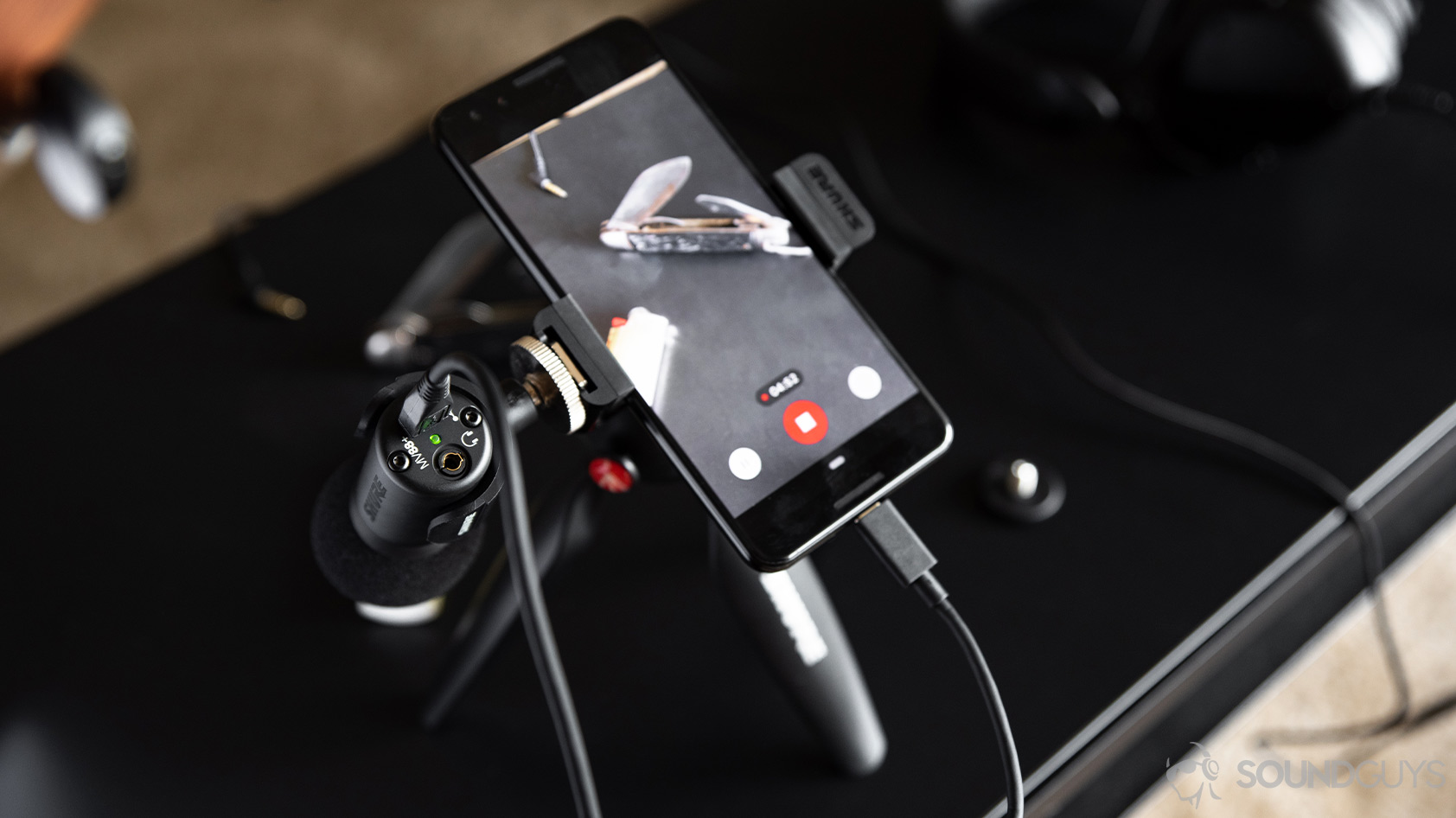
The more recent Shure MV88+ Video Kit may share a namesake with the MV88, but the two products diverge from there. The former works with both Android and iOS devices, while the latter was plug-and-play with iOS devices only. What’s more, the Video Kit includes, as you may expect, a host of accessories for portable video-making. You get a Manfrotto Pixi tripod, expandable phone clamp/mount, and a USB-C and Lightning cable.
Both have a 20Hz-20kHz frequency range and can record up to 24bit/48kHz audio. They also support the same four polar patterns and five-band EQ adjustment. While each has its own unique finish, both microphones have an all-metal construction. If you’re specifically geared toward video-making and not just audio field recording, the Shure MV88+ makes more sense.
How doe the Shure MV88+ Video Kit sound, and is it better than a phone mic?
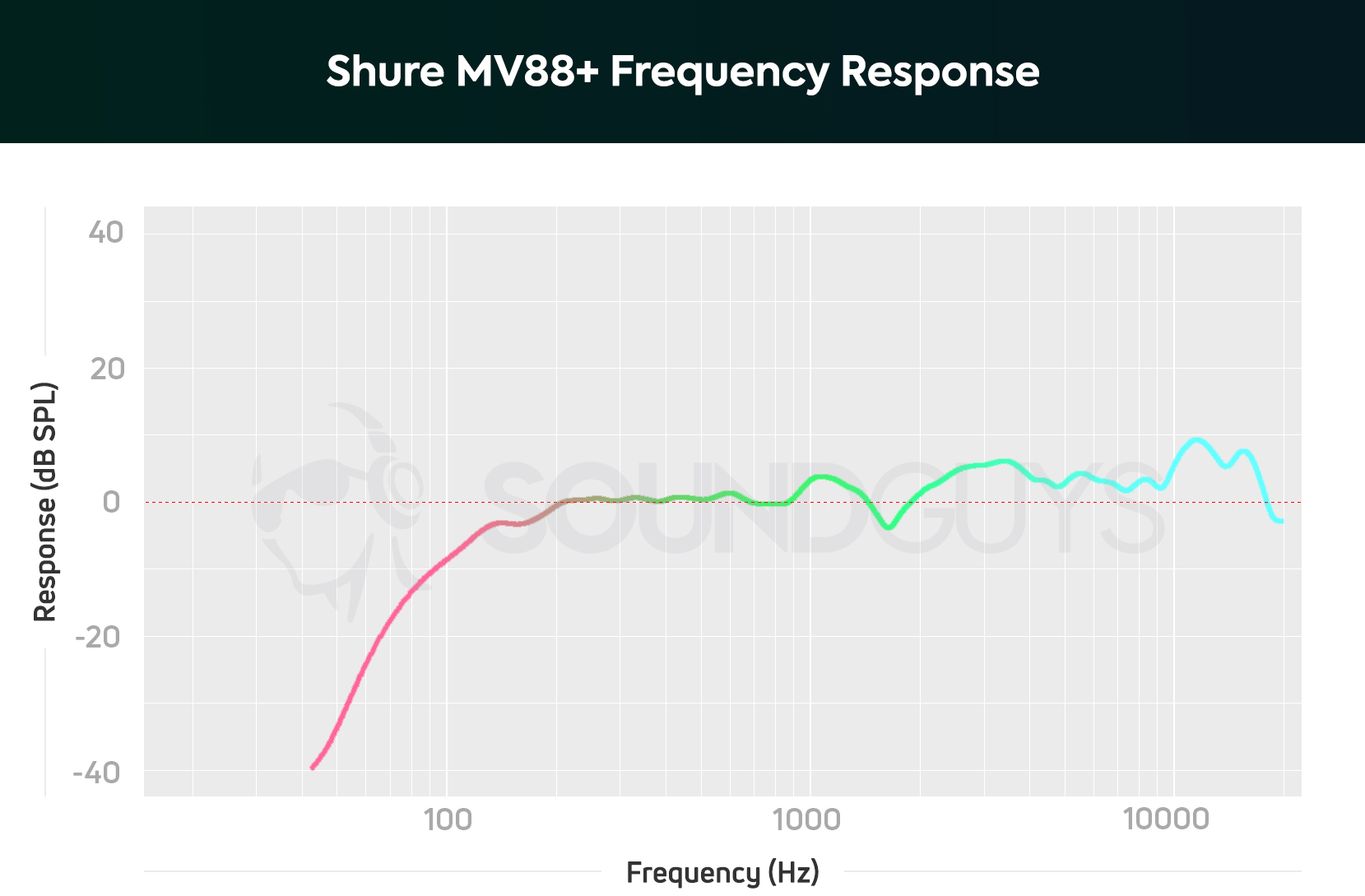
The Shure MV88+ is conclusively better than a smartphone’s integrated microphone. As you can see from our frequency response charts, recordings are neutral-leaning. This means you can do more with post-processing without running into distortion issues. While Shure does provide five digital signal processing (DSP) options via the ShurePlus Motiv app, the flat profile is the most versatile. If you know you’re going to edit the audio later, use this setting.
Shure MV88+ mic demo (flat, 90-degree stereo width)
Shure MV88+ mic demo (speech, 60-degree stereo width)
As you can hear, there’s much more echo to my voice with the speech profile selected. That said, the 60-degree stereo width selection did a good job at rejecting the snap. It’s still audible but is relayed much quieter than how it sounded in the room. You can hear why the flat profile is preferable for those who have time to edit. If you have a room properly set up for recording, though, the speech option is great when you’re crunched for time.
How does the microphone sound to you?
Related: How to read charts
Should you buy the Shure MV88+ Video Kit?
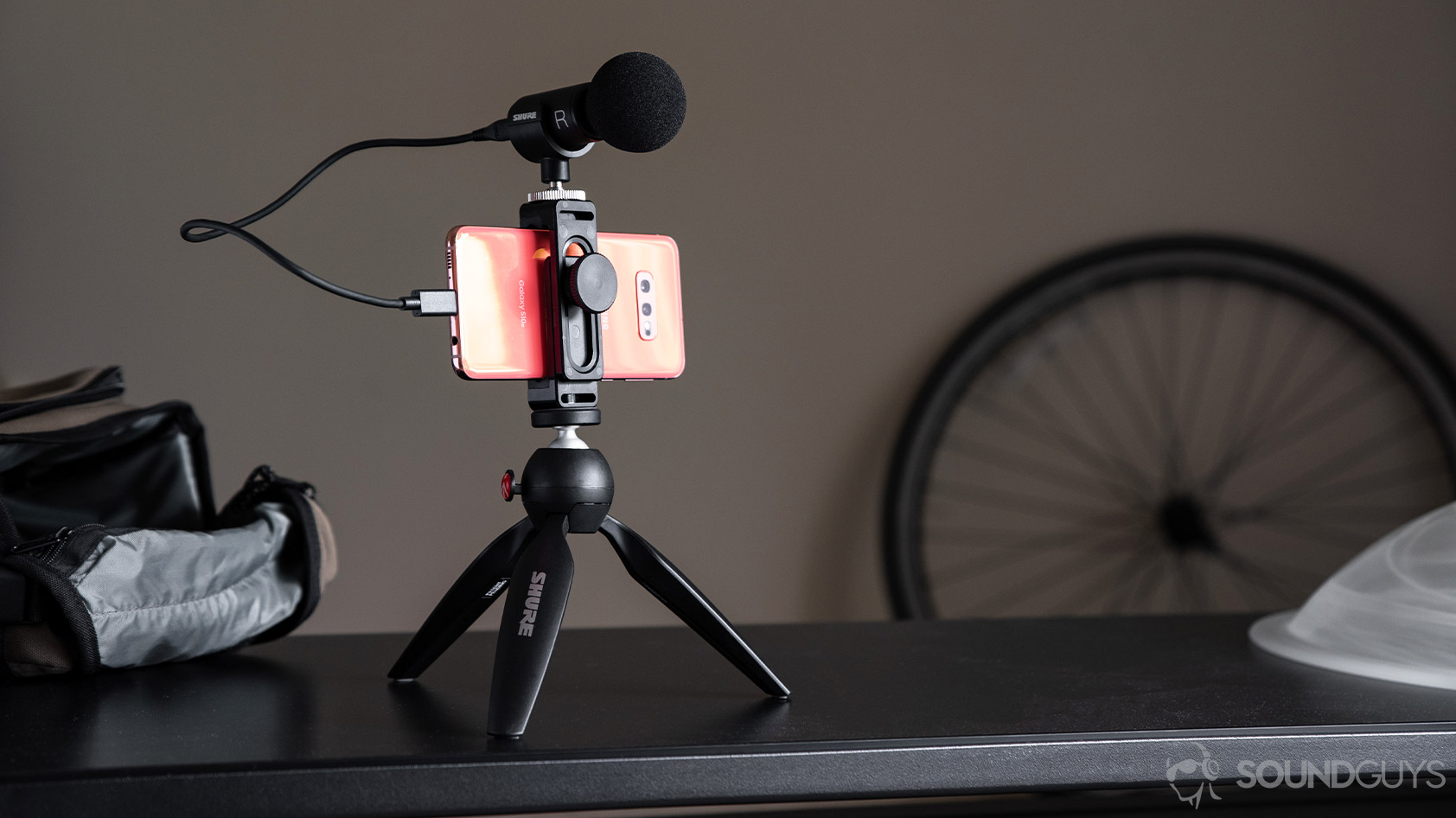
For those in need of a reliable all-in-one mobile recording solution and don’t mind paying a premium for it, yes. Shure’s products don’t come cheaply and that’s because it’s a company that knows its worth and stands behind the integrity of its products. If you know you’ll use the MV88+ Video Kit for years to come, it’s a worthwhile investment. Otherwise, it’s more economical to buy comparable pieces individually (e.g., Rode mic, Manfrotto PIXI Mini tripod, and phone clamp), but then you’re missing out on Shure’s excellent signal processing and apps.
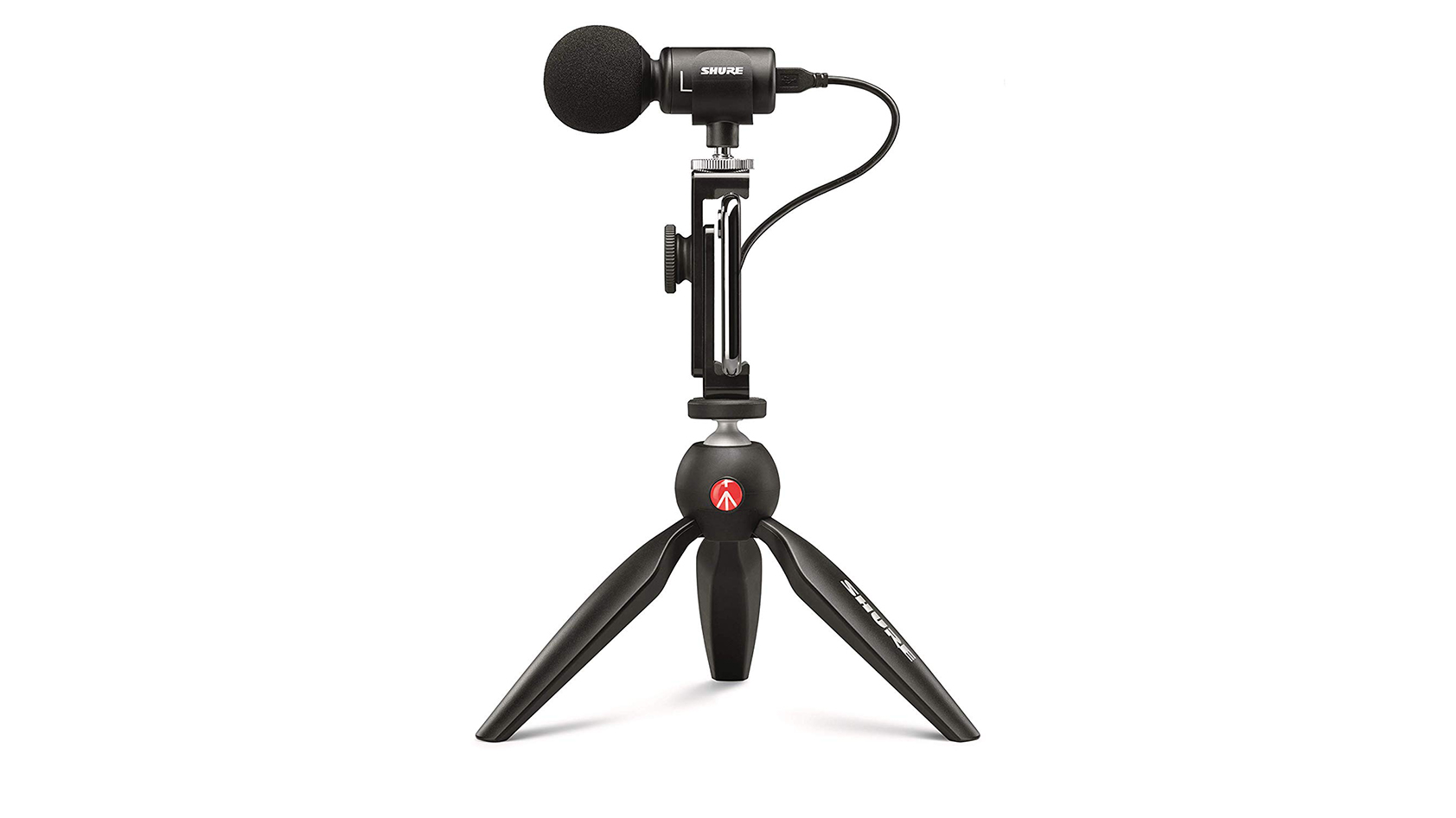
What should you get instead of the Shure MV88+ Video Kit?
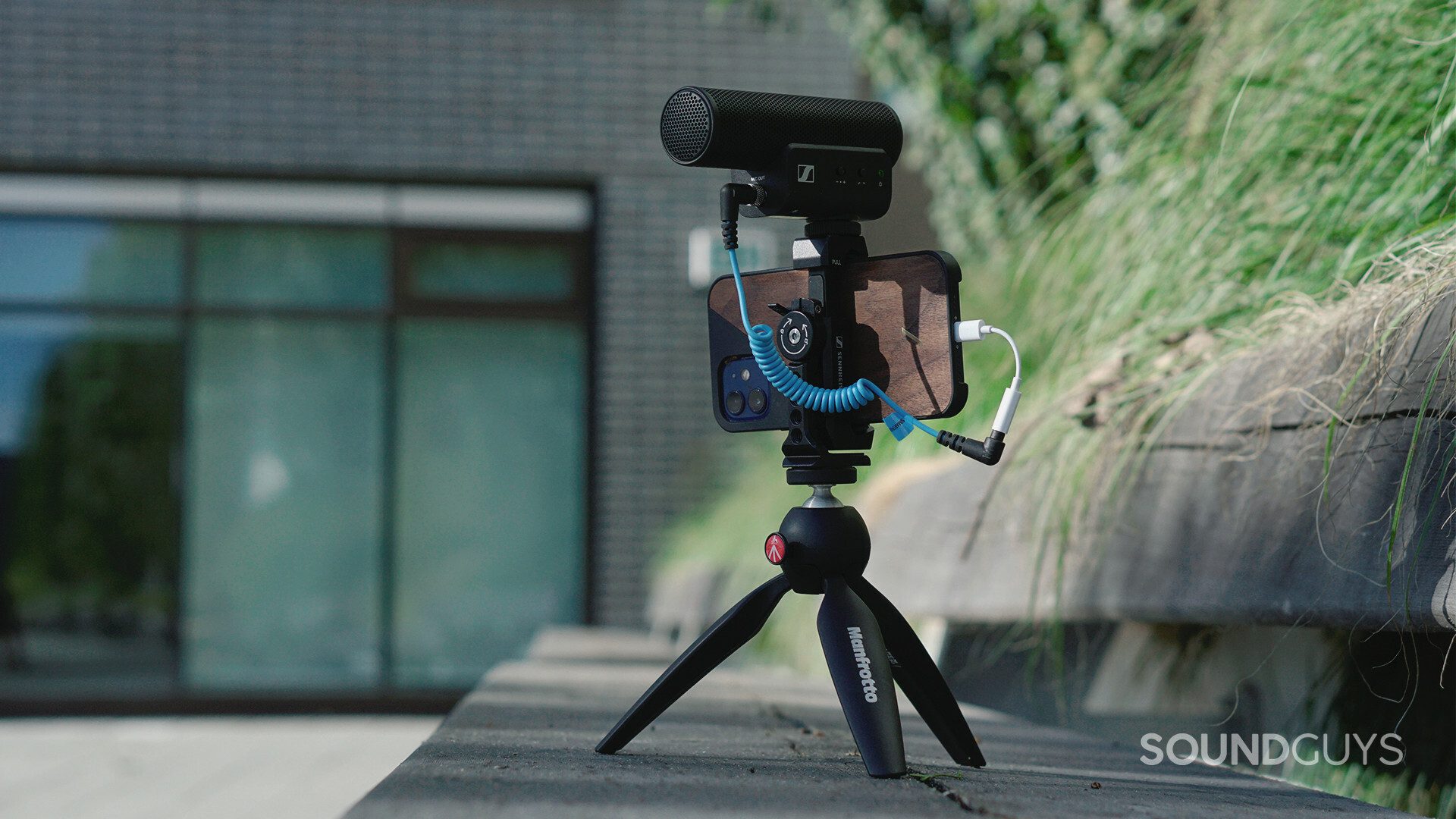
The Sennheiser MKE 400 is the most obvious alternative to the Shure MV88+ Video Kit. With Sennheiser’s video kit, you get the same Manfrotto PIXI tripod, a similar phone holder, and a microphone. However, Sennheiser includes a deadcat with its kit, which is arguably more effective than Shure’s simple windscreen when recording outside. By and large, you get a similar experience across the board, however, the Sennheiser microphone sounds a bit clearer and doesn’t pick up as much echo as the MV88+.
For creators who don’t need all of the smartphone accessories, the Sennheiser MKE 200 Mobile Kit is a smart pick for half the cost.
Next: Shure AONIC Free review
Thank you for being part of our community. Read our Comment Policy before posting.